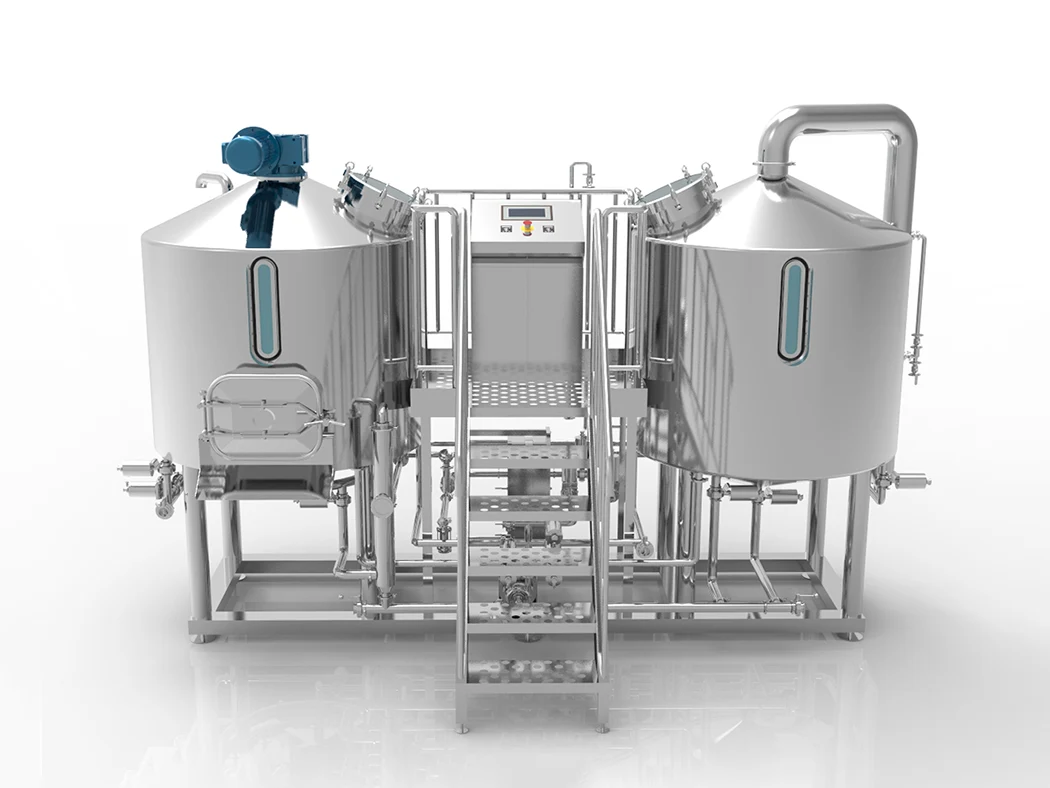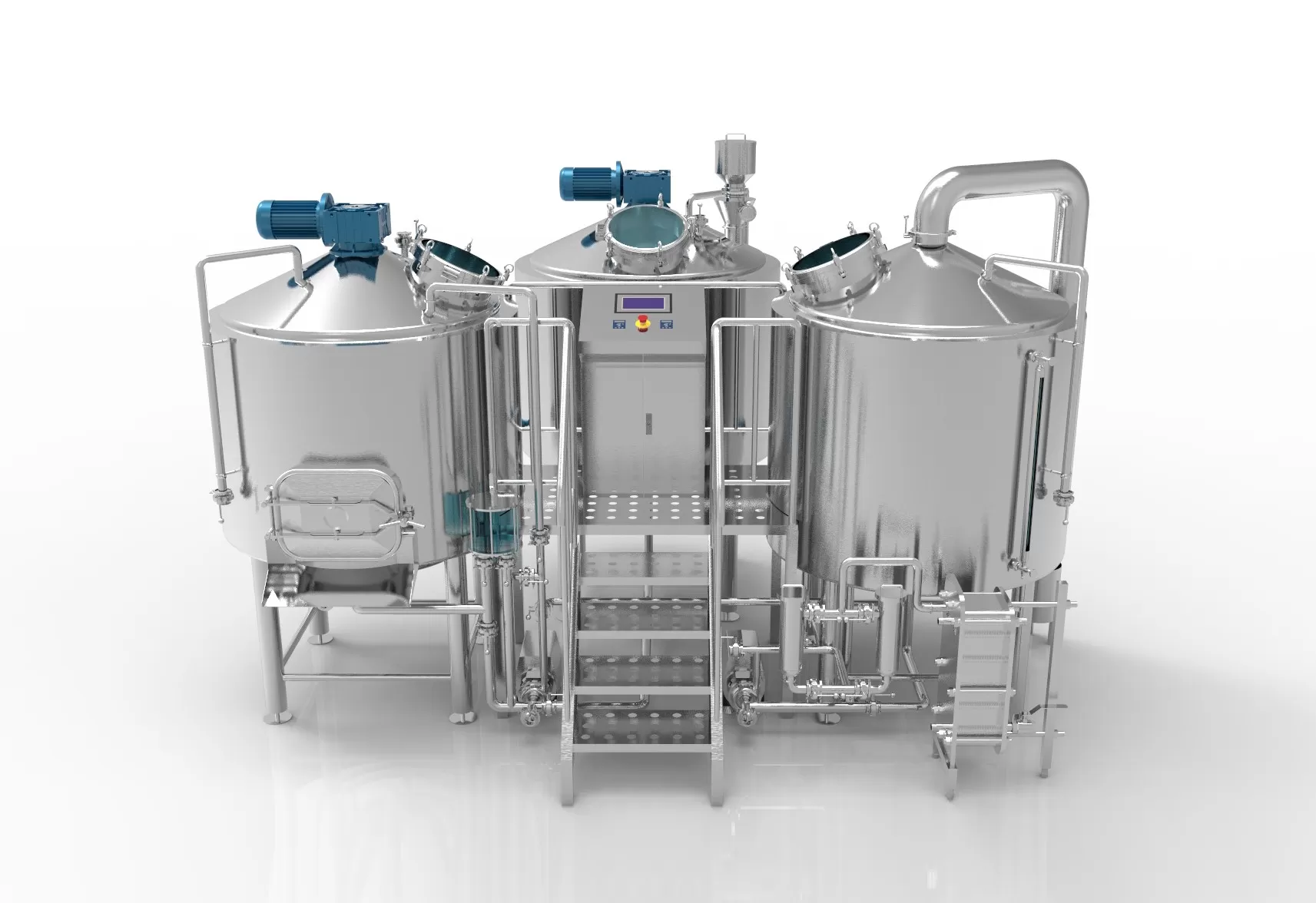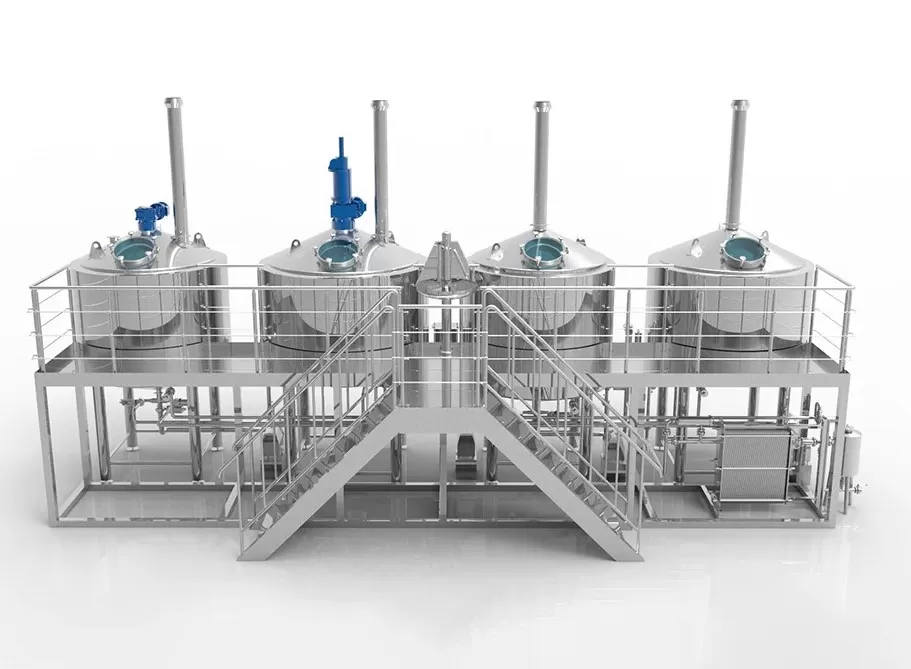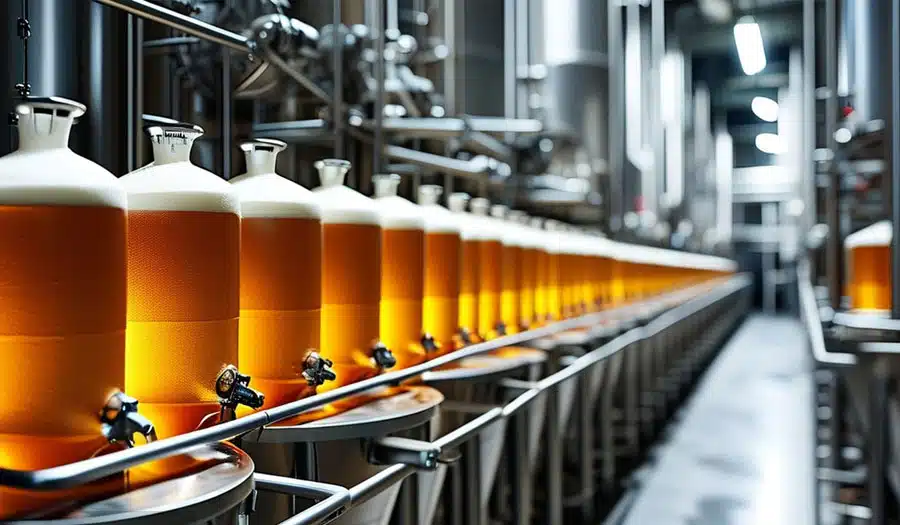In the process of brewing beer, fermentation is the key link to determine the flavor, taste, and quality, and the beer fermentation tank is the core equipment of this process. Whether it is large-scale industrial production or small-scale craft brewing, the state of the fermentation tank directly affects the activity of yeast, the stability of fermentation, and the final flavor of beer. A properly maintained fermentation tank can not only ensure that the yeast works efficiently in an ideal environment but also reduce the risk of contamination, extend the life of the equipment, and improve production efficiency. Therefore, daily maintenance is essential. To maintain the best fermentation environment, brewers need to pay attention to temperature control, pressure management, oxygen regulation, yeast health, fermentation tank cleanliness, and carbon dioxide balance.
What is a beer fermenter?
A beer fermenter is an important device used in the beer production process to ferment wort and convert it into alcohol and carbon dioxide. It is the core device of modern brewing technology, which can provide a stable fermentation environment so that yeast can complete the fermentation process under suitable conditions.
During the fermentation process, the beer fermenter must not only maintain a suitable temperature and pressure, but also ensure the uniform distribution of oxygen, nutrients and yeast to ensure the smooth progress of fermentation. The design of the fermenter also helps to control yeast sedimentation, liquor clarification and the quality of the final product. Therefore, the correct use and maintenance of the fermenter is essential.
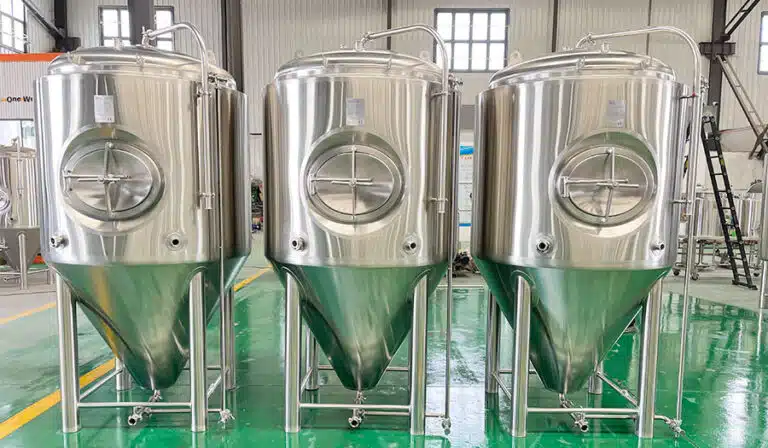
Types of beer fermentation tanks
Open fermentation tanks
Open fermentation tanks are traditional fermentation equipment, mainly used for some special process beers, such as Belgian abbey beer and German wheat beer. The top of this fermentation tank is open, allowing yeast to float freely, which is convenient for manual sampling and observation of fermentation status. However, the disadvantage of open fermentation tanks is that they are susceptible to contamination and have extremely high requirements for sanitary conditions.
Sealed fermentation tanks
Sealed fermentation tanks are the most common equipment in modern beer production. This tank body is usually made of stainless steel, which can accurately control temperature, pressure, and gas exchange to reduce the risk of contamination. Sealed fermentation tanks are suitable for large-scale industrial production and can ensure product consistency and stable quality.
Cylindrical conical fermentation tanks
Cylindrical conical fermentation tanks are the most widely used fermentation equipment in modern breweries. It has the following characteristics:
The tank body is cylindrical and the bottom is conical, which is convenient for yeast sedimentation and discharge.
- Equipped with a temperature control system to adjust the fermentation temperature.
- Adopting a sealed design to reduce the risk of oxidation and contamination.
- Yeast recovery can be carried out directly to improve production efficiency.
Open barrel fermentation tanks
This type of fermentation tank is mainly used to produce certain types of beer, such as sour beer or wild fermentation beer. The microorganisms in the barrel can give the beer a unique flavor, but it is less used in commercial brewing because it is difficult to clean and disinfect.
Daily maintenance of beer fermentation tanks
Regular cleaning
The interior of the fermentation tank has been in contact with yeast, wort, and beer residue for a long time, which makes it easy to breed bacteria and affect the flavor of beer. Therefore, it must be cleaned and disinfected regularly:
- CIP (cleaning in place) system: automatic cleaning equipment is used to clean the inside of the fermentation tank through alkali, acid, and hot water circulation.
- Manual cleaning: For parts that are difficult to cover with the CIP system, high-pressure water guns or manual brushing can be used.
Equipment disinfection
After cleaning, thorough disinfection is required to kill residual microorganisms. Common methods include:
- Chemical disinfection: use disinfectants such as peracetic acid and sodium hypochlorite.
- Thermal disinfection: sterilization by hot water or steam.
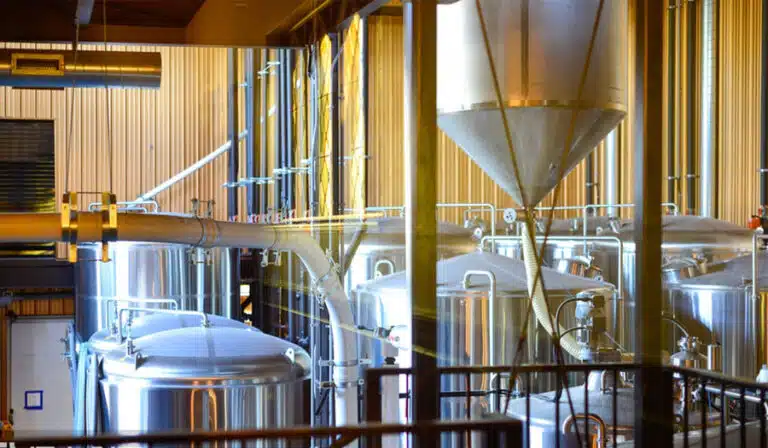
Temperature control check
Temperature control is crucial to fermentation, and it is necessary to ensure that the temperature sensor and cooling system of the fermentation tank are working properly. Daily inspections include:
- Check the accuracy of the temperature sensor to prevent temperature fluctuations from affecting fermentation.
- Observe whether there is leakage or freezing in the cooling system.
Sealing check
The fermentation tank must be kept sealed to prevent oxidation and contamination. Inspection focuses include:
- Whether there are cracks at the tank welding points.
- Whether the sealing ring is aged or damaged.
- Whether the pipe interface is tight.
Pressure control
Carbon dioxide is produced during the fermentation process, and the pressure in the tank must be maintained in an appropriate range. Regular inspection is required:
- Safety valve: prevent the tank from bursting due to excessive pressure.
- Exhaust system: ensure that carbon dioxide can be discharged smoothly to prevent excessive accumulation.
Yeast management
The yeast management of the fermentation tank affects the flavor and quality of the beer. Attention should be paid to:
- Regular sampling to test yeast activity to avoid abnormal fermentation.
- Clean up the deposited dead yeast to prevent the beer from having a peculiar smell.
External maintenance of the tank
Although the internal maintenance of the fermentation tank is the most critical, external maintenance is equally important:
- Wipe the surface regularly to prevent dirt accumulation.
- Check the tank support structure to avoid looseness leading to tilting or damage.
Why is it important to maintain beer fermenters?
Ensure stable beer quality.
Beer fermenters are the main place where yeast converts sugars in the wort into alcohol and carbon dioxide. Their cleanliness and maintenance directly affect the quality of the final beer. If there are residues or contamination sources on the inner wall of the fermenter, it will cause odor, turbidity, infection and other problems, making the beer flavor poor or even completely scrapped. Therefore, keeping the fermenter clean and hygienic is the key to ensuring beer flavor consistency and stable quality.
Prevent microbial contamination
The fermenter is a relatively closed environment with suitable temperature and humidity, which is very likely to become a breeding ground for microorganisms. If it is not cleaned and disinfected regularly, bacteria, mold or wild yeast may contaminate the fermentation process, causing beer to become sour, turbid, odor and other problems. Regular maintenance can effectively reduce these risks and ensure that the fermentation process is carried out in a pollution-free environment.
Improve production efficiency
Good maintenance ensures that the fermenter operates in the best condition, reduces the failure rate, and improves fermentation efficiency. For example, regular inspections of components such as temperature control systems, pressure regulators, cooling pipes, etc. can avoid fermentation delays or batch scrapping due to equipment failure. An efficient fermentation process not only increases production but also reduces operating costs.
Extend equipment life
Fermentation tanks are usually made of stainless steel, but after long-term use, if there is a lack of proper cleaning and maintenance, the tank may be scaled, corroded, or parts may age. Well-maintained equipment can extend service life, reduce maintenance costs, and avoid expensive expenses for replacing new equipment due to tank damage.
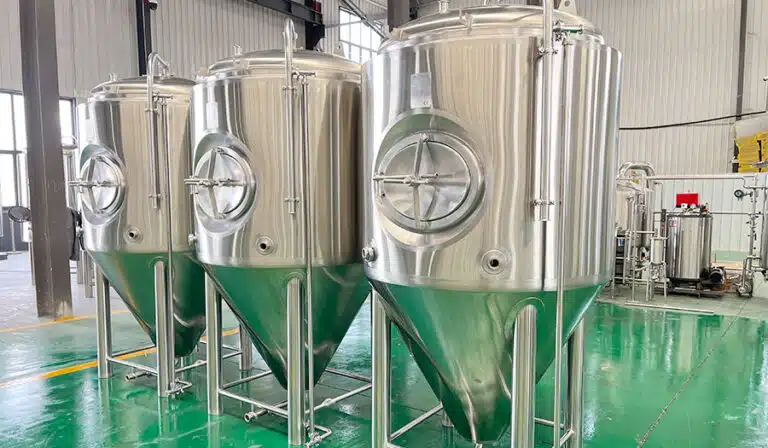
Ensure safe production
A large amount of carbon dioxide is produced during beer fermentation, and the pressure inside the fermentation tank needs to be kept within a safe range. If there is a problem with the valve, seal, or pressure control system, it may cause the tank to leak, burst, or operate accidentally, endangering the safety of production personnel. Regularly checking the pressure safety valve, pipeline sealing, and automatic control system can effectively reduce safety hazards and ensure smooth production.
Avoid cross-contamination
Different batches of beer use different yeast strains and recipes. If the fermentation tank is not cleaned thoroughly, the residue of the previous batch may contaminate the new fermentation process, making the beer flavor impure. Especially for breweries that brew craft beer, keeping the fermentation tank sterile
Meeting Food Safety Standards
Beer is a food product, and the sanitation standards of the fermentation process must meet relevant regulatory requirements. If the fermentation tanks are not properly maintained, food safety regulations may be violated, resulting in product recalls and even legal liability. Breweries must strictly implement cleaning and maintenance standards to ensure that beer production meets food safety specifications.
How to ensure the best beer fermentation environment?
Precisely control the fermentation temperature.
Temperature is one of the most critical factors affecting beer fermentation, and different types of beer need to be fermented within a specific temperature range. For example, lager beer is usually fermented at a low temperature of 7-13°C, while ale beer is fermented at a higher temperature of 15-25°C. Too high a temperature can cause yeast metabolism to be too fast and produce undesirable flavors, such as too many aldehydes or esters, while too low a temperature may reduce yeast activity, prolong fermentation time, and even cause fermentation stagnation. Therefore, the fermentation tank needs to be equipped with an efficient temperature control system and the temperature sensor should be calibrated regularly to ensure that the fermentation process is carried out under suitable temperature conditions.
Maintaining the proper oxygen content
Oxygen is essential for yeast reproduction in the early stages of beer fermentation, but excessive oxygen can cause beer oxidation and affect the taste. When the wort enters the fermentation tank, the dissolved oxygen content should be strictly controlled. It is generally recommended that the oxygen content be between 8-12 ppm to ensure that the yeast can reproduce healthily but will not cause oxidation problems. In addition, the entire fermentation process should try to avoid contact with air, such as using closed pipes to transfer wort and ensuring that the tank is well sealed.
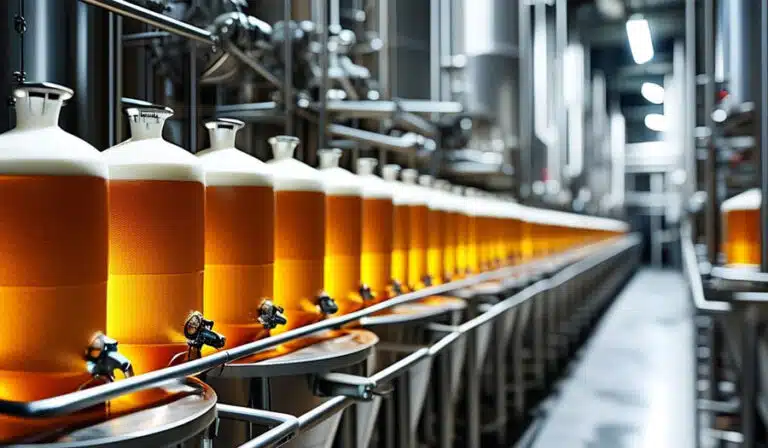
Control fermentation pressure
During the fermentation process, yeast will produce a large amount of carbon dioxide. If the pressure in the tank is too high, it will inhibit the activity of the yeast and affect the fermentation efficiency; if the pressure is too low, the carbon dioxide may escape too quickly, affecting the carbonation degree of the beer. Therefore, the fermentation tank is usually equipped with an automatic pressure regulation system to ensure that the pressure remains within a reasonable range. For example, the fermentation pressure of ale beer is usually 0.1-0.3 bar, while lager beer may require higher pressure to control the fermentation process.
Adopt reasonable yeast management.
The health of yeast directly affects the fermentation quality of beer. Ensuring the best fermentation environment requires:
Use highly active yeast and regularly update or cultivate fresh yeast. Control the amount of yeast added to ensure that the yeast concentration in the fermentation tank is appropriate to avoid fermentation too fast or too slow. Regularly recycle, clean and store yeast to prevent aging or mutation, which affects the fermentation efficiency and beer flavor.
Clean and disinfect the fermentation tank regularly
The cleanliness of the fermentation tank is directly related to the quality of the beer. Any residual yeast, protein, or sugar may become a hotbed for the growth of miscellaneous bacteria, affecting the fermentation process. Therefore, a CIP (cleaning in place) system should be used for automatic cleaning, and the cleanliness of the tank should be checked manually regularly. In addition, thorough disinfection should be carried out before and after fermentation. Steam disinfection, high-temperature water washing, or chemical disinfectants (such as peracetic acid) can be used.
Ensure the airtightness of the fermentation tank.
Oxidation is one of the main factors affecting the quality of beer, especially in the late fermentation and maturation stages. The fermentation tank must be well sealed to prevent the entry of outside air.
Regular testing and data analysis
To ensure the best fermentation environment, in addition to daily maintenance, data monitoring and analysis should also be carried out, including:
- Fermentation temperature curve, observe whether the temperature change is in line with the set range.
- CO₂ and O₂ content, to ensure that the fermented beer is not oxidized.
- Alcohol concentration and final sugar content, to determine whether the fermentation is complete.
- Flavor evaluation, to ensure that the fermentation environment has no adverse effects on the taste.
- Using a modern fermentation management system, these data can be monitored in real-time to ensure the stable quality of each batch.

